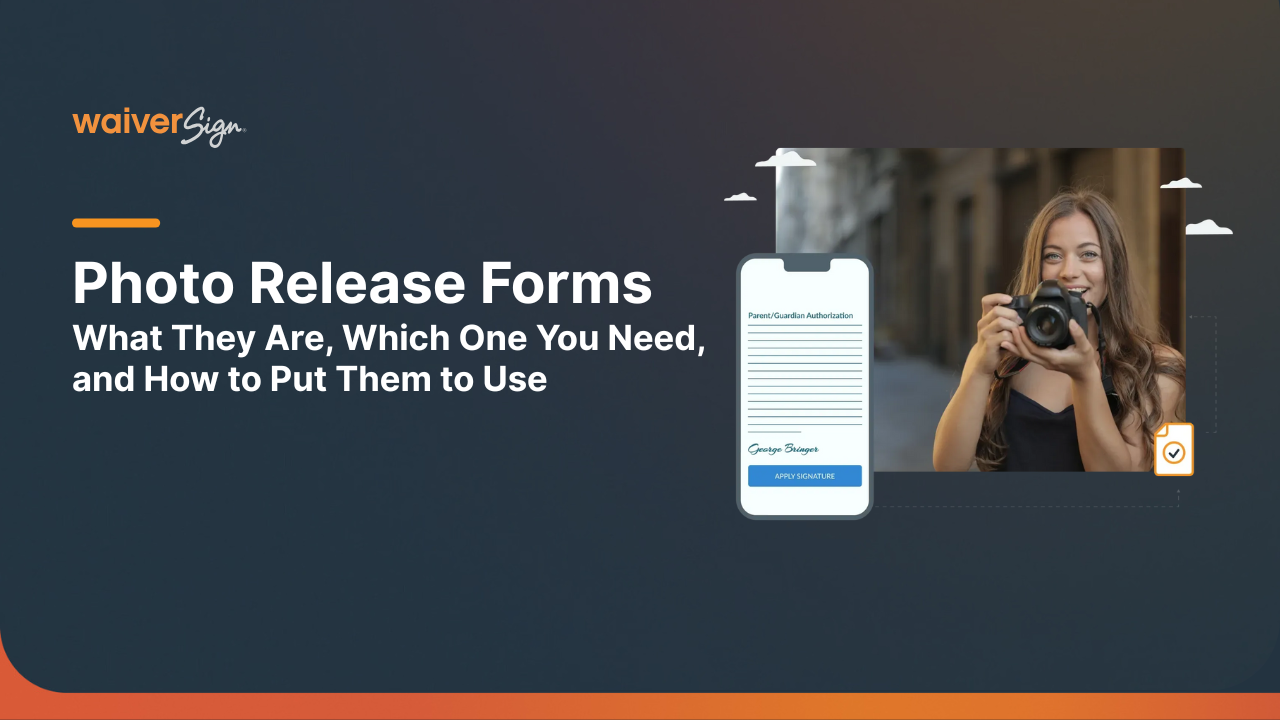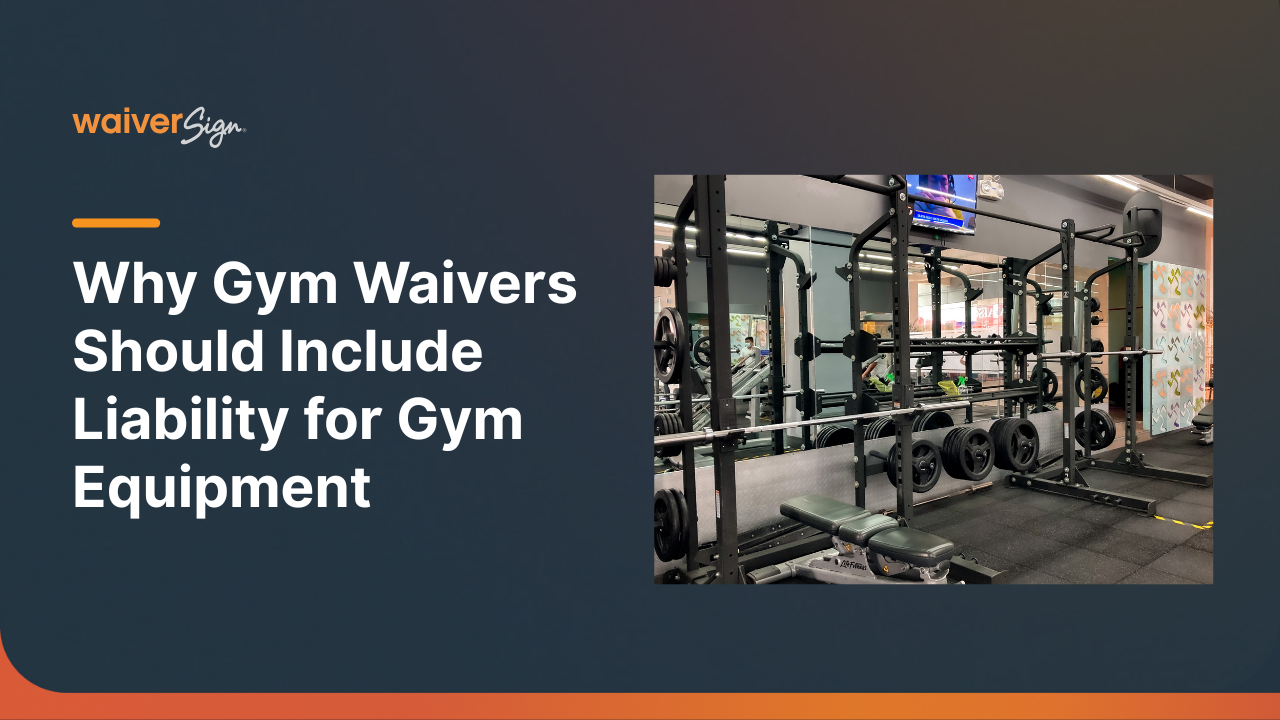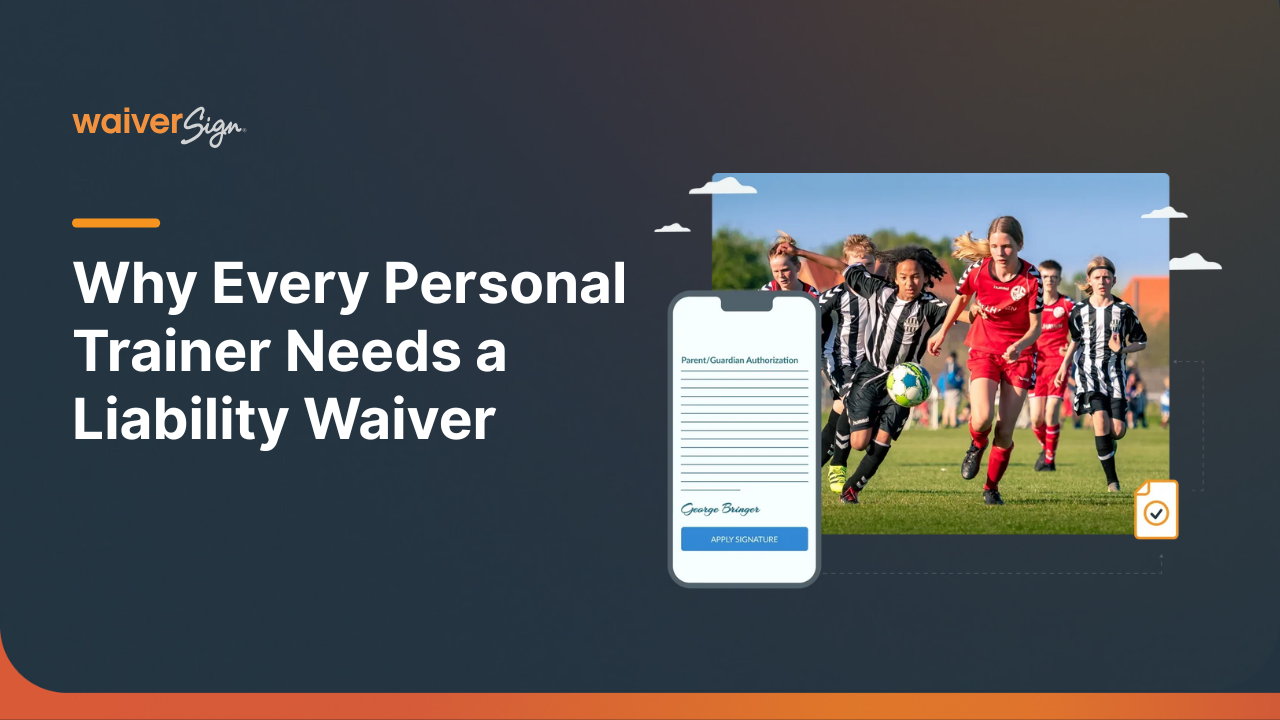The Difference Between Waiver and Release: What Business Owners Need to Know
Nikki DeSantis
The Difference Between Waiver and Release: What Business Owners Need to Know
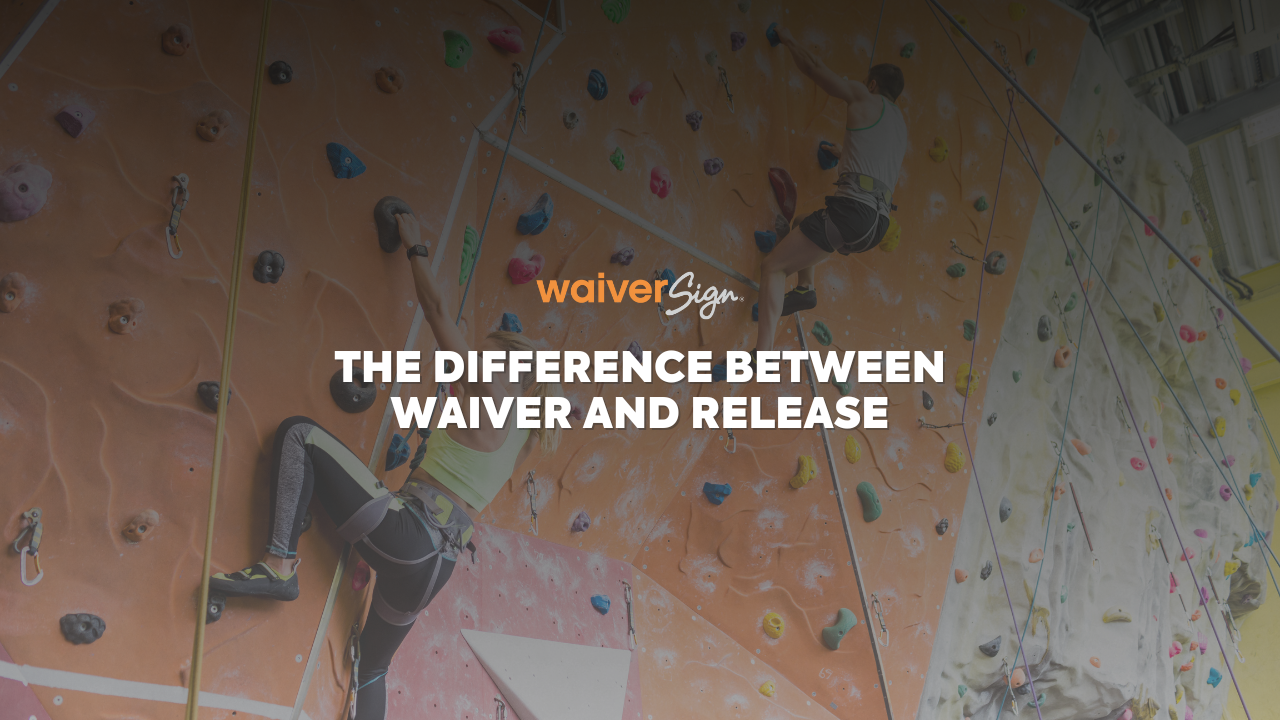
Running a business, especially one that involves physical activity, risk, or direct interaction with customers, means thinking about protection. Not just protecting your customers, but also your operations, your staff, and your long-term goals. That’s where liability forms come in, particularly waivers and releases.
At first glance, these two terms, waiver and release, seem interchangeable. While they’re often bundled together in legal forms, understanding their differences can help you create better, more effective documents. It also helps ensure that your digital waivers, like those created through WaiverSign, are doing the job you need them to do.
Let’s explore the
difference between waiver and release,
how each fits into your business strategy, and how you can use them to build trust and protect your bottom line.
Understanding the Basics of Waivers vs Releases
Let’s start with some basic definitions:
- Waiver: A waiver is a voluntary surrender of a known right. When a customer signs a waiver, they are choosing to give up their right to hold your business liable if something goes wrong.
- Release: A release, or release of liability, typically comes after an incident has occurred. It’s an agreement not to pursue legal action in exchange for something, often a settlement.
So, in simple terms:
- A waiver is signed before something happens.
- A release is often signed after something happens.
The Importance of Understanding the Liability Forms
Understanding waiver vs release is important for risk management. When you know what kind of document you're working with, you can be clearer with your customers and better protected if issues arise.
Use Cases:
- A rock climbing gym uses waivers to ensure participants know the risks and agree not to sue if injured.
- After an incident, a
spa might offer a
release form with a refund or credit in exchange for the customer agreeing not to pursue further action.
Why Businesses Combine Waiver and Release Forms
Many companies opt for a liability release waiver, a hybrid document that combines language from both types. This all-in-one form provides upfront protection while also reinforcing the customer's acknowledgment of potential risks.
Digital waiver platforms like
WaiverSign help businesses easily integrate waiver and release language into one seamless, branded experience that’s signed before participation begins.
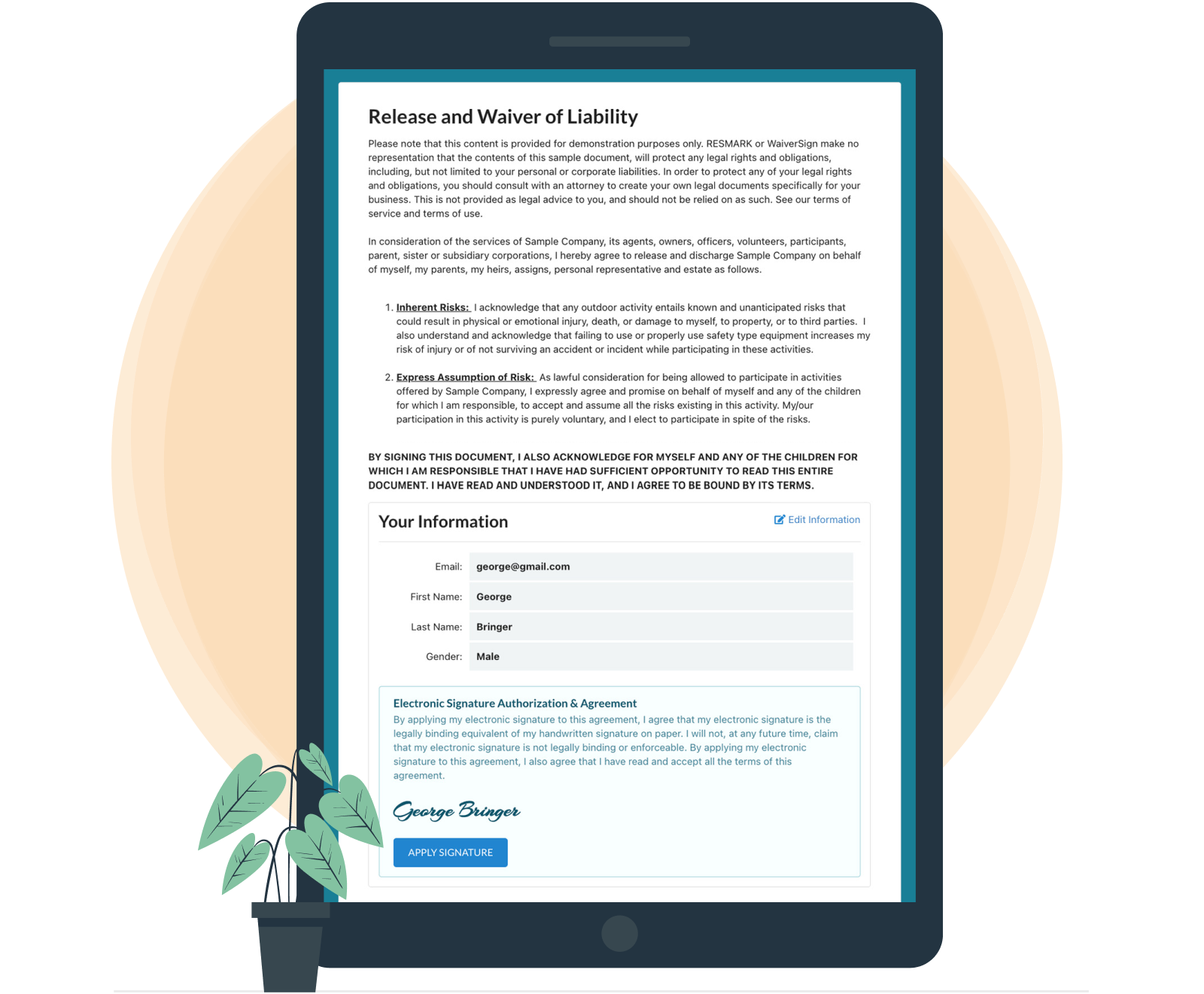
The Legal Strength of Digital Forms
While we’re not offering legal advice, it’s worth noting that digital liability forms can carry the same weight as paper if done correctly. With WaiverSign, businesses benefit from:
- Timestamped records
- Cloud-based access
- Easy retrieval for legal backup
- Mobile-friendly signing experience
WaiverSign offers powerful benefits for marketing and customer engagement. When customers sign a digital waiver, you can include an opt-in checkbox for marketing communications. This allows you to build a contact list of people who are already familiar with your brand and interested in your services.
You can easily export waiver data for use in email marketing platforms, loyalty campaigns, or follow-up messages. Whether you’re promoting a seasonal offer or gathering reviews after a visit, WaiverSign helps you turn your waiver process into a marketing asset that drives long-term growth.
How WaiverSign Makes It Simple
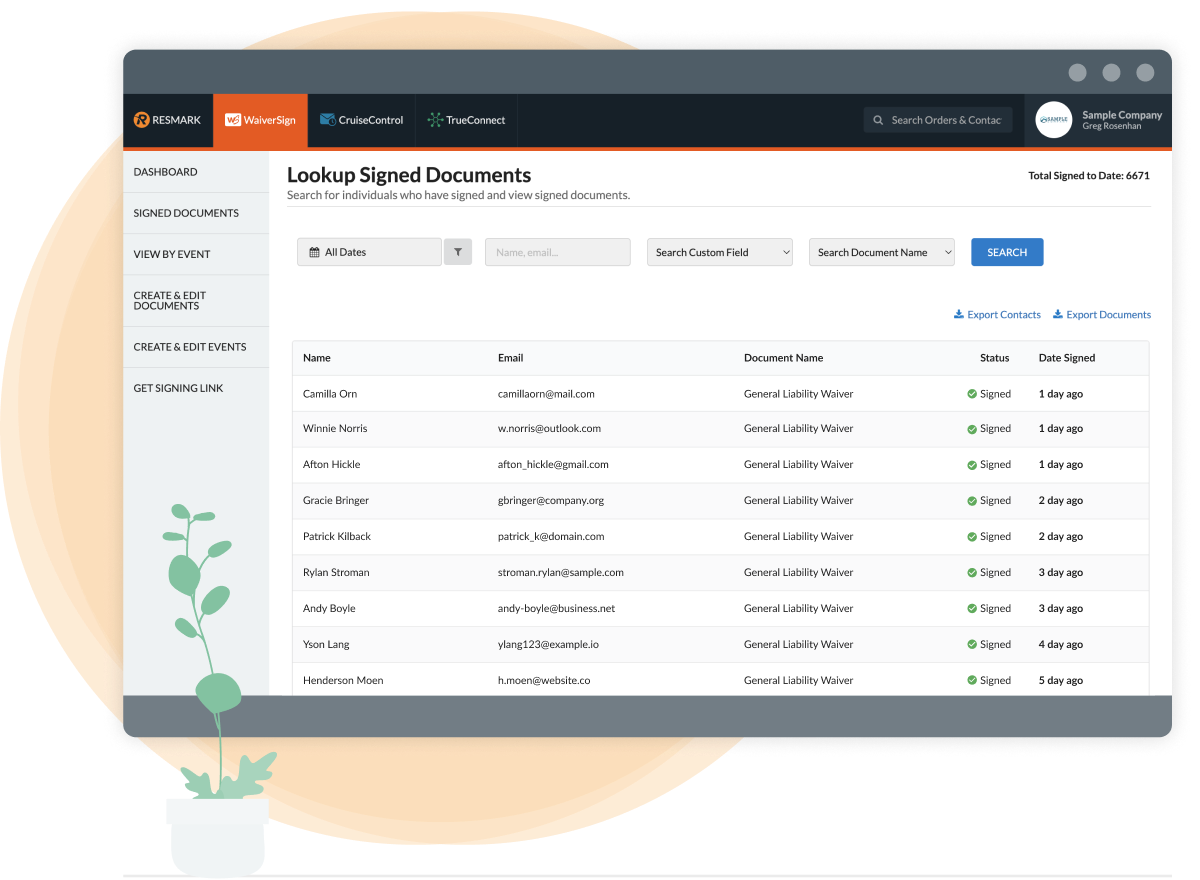
WaiverSign’s platform is designed with business owners in mind. You don’t have to be a legal expert to create strong documents. With customizable templates, e-signature tracking, and branding tools, you can create waiver and release forms that:
- Clearly communicate risks
- Provide strong legal documentation
- Enhance customer trust
It’s not just about protection. It’s about showing professionalism in every step of your process.
Waiver vs. Release
- When it’s used: A waiver is used before an activity takes place. A release is used after an incident or issue occurs.
- Purpose: A waiver prevents legal claims before they arise. A release settles or prevents legal claims after an event.
- Legal effect: A waiver gives up the right to sue before an activity. A release frees one party from liability after something happens.
- Common use: Waivers are used in adventure businesses, fitness centers, and spas. Releases are used for conflict resolution or after incidents.
FAQs: Waiver and Release Forms
Is a waiver the same as a release of liability?
Not exactly. A waiver may include a release of liability clause, but a true release of liability is usually more focused on settling post-incident issues. Learn more about release of liability.
Can I combine waiver and release into one document?
Yes. Many businesses use a waiver and release form to cover both areas, especially in industries with inherent risk.
What’s the benefit of a release after an incident?
A release can help settle a dispute without going to court. It may involve compensation in exchange for not taking legal action.
Make Liability Protection Seamless
Understanding the difference between waiver and release helps you protect your business and provide a more transparent, professional experience for your customers. Whether you're running a climbing gym, a fitness class, or a yoga retreat, having the right digital forms in place is key.
With WaiverSign, you can simplify how you collect, store, and manage your release of liability online while also making a great impression on every customer who walks through your door.
Ready to simplify your waiver process?Try it for free by clicking the button below!

See If WaiverSign Works For You
Don't wait to make the next step in streamlining your business.


